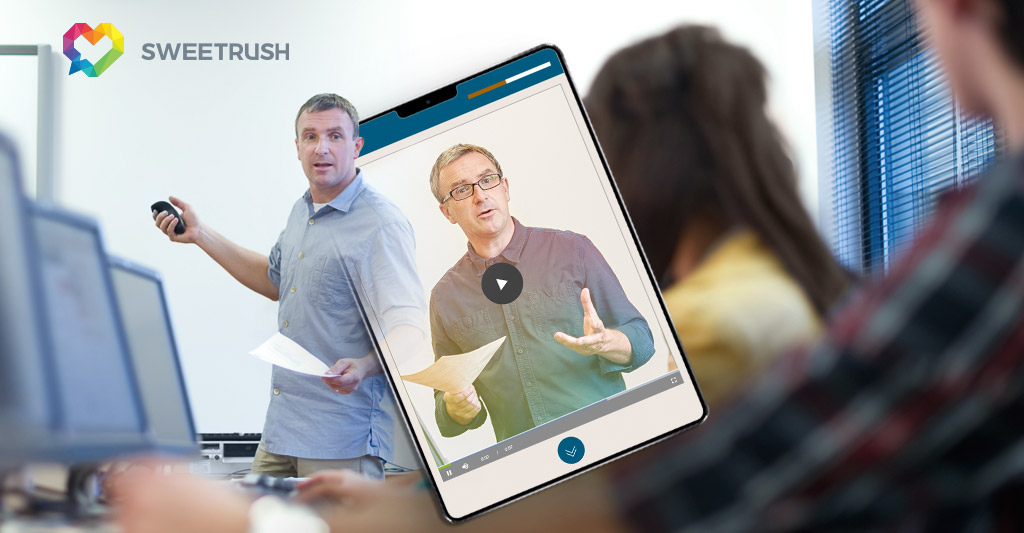Instructional design expert Clare Dygert shares five key considerations for converting instructor-led training to digital learning.
Here’s a very common scenario: Your client has been delivering training for some time now in a face-to-face or instructor-led modality. The training is fairly well-received, and in fact, learners have said that they liked the opportunity to meet and network with other people during the training and that the trainer is engaging.
But now the company is growing, and the instructor-led training is just not scalable. Or the cost of flying everyone to the training site (plus hotel stays and restaurant meals) is getting too expensive. Or perhaps the training takes three days and the business really wants the learners trained in less time. Whatever the reason, the client wants you to do your magic and convert the course to a less expensive, shorter, but more engaging digital version of itself.
So what will you do?
Here are five key considerations for converting instructor-led training to digital learning while still giving learners a quality experience.
1. Consider the audience.
At SweetRush, we put our learners first! And it makes sense: you’re going to be making a lot of decisions about how the content should be presented, checked, and practiced. Without a thorough understanding of your learners, you won’t make the optimal decisions. What do they know already? Do they need a brush-up on their knowledge or to take a deep, first-time dive? Do they like information in the moment, or do they want to rub elbows with other learners? Knowing your audience will guide all the other choices you make! Learn more about audience analysis.
2. Consider the content.
Some of your content is going to work great for eLearning, while other kinds of content you’ll want to present in an instructor-led form. Knowledge-based content—like factual information, definitions, or processes—are ideal for eLearning. Moving that kind of content to a digital modality will also probably save you seat time. The rule of thumb is that eLearning will take one-third of the time that instructor-led training will require. And some of your content will be really useful as performance support content or job aids—for example, PDFs in an easy-to-access digital location, or physical supports like desk references or posters. Maybe posters with augmented reality components? (But that’s a whole other article!)
3. Consider practice and feedback.
When learners are practicing judgment-making (such as sales skills, soft skills, or design skills), it’s ideal to be in the presence of someone who has mastered those skills. The learner can receive nuanced feedback from someone who knows just what tweaks the performance needs to take it to the next level. Likewise, if the content is procedural—like how to install a printer, for example—the “gold standard” practice is to actually do the procedure steps using the equipment. Can you accomplish the same goals using branching scenarios or a simulated environment? Sure! But if you can include some face-to-face or real-life experiences, this is where to use those training modalities. Learn more about blended learning best practices.
4. Consider collaboration.
Sometimes the best training is where the old dogs share their war stories and the young pups ask challenging questions. If the experience you’re considering digitizing includes those moments, think hard about how you will maintain that vibe. eLearning and virtual instructor-led training tend to be focused on a single font of wisdom (i.e., the provided eLearning content or the vILT facilitator) rather than a more decentralized source of truth (e.g., peer-to-peer sharing). If this has been the best part of your existing learning, perhaps maintaining a face-to-face session is worth considering. Learn more about strategies to engage cross-generational teams.
5. Consider consistency.
Sometimes the content we’re presenting is sensitive and must be expressed in a specific way. Or, for some other reason, we want to be certain that everyone is hearing the same message expressed the same way. In this case, a digital learning experience guarantees consistency, and—bonus!—allows you to test for understanding and (thanks to your learning management system) record the assessment results and prove that the individual completed the instruction. In situations where message consistency is key, nothing beats a digital presentation of content. Read a case study about bringing consistency to call center practices using an online simulation.
Of course, there are no hard and fast rules for how or when to convert instructor-led training to an eLearning or virtual instructor-led experience. And frequently, the total solution will be a blended one, combining both digital and face-to-face elements. But with a little thinking and some empathy, you will assemble the best learning solution for your learners.




